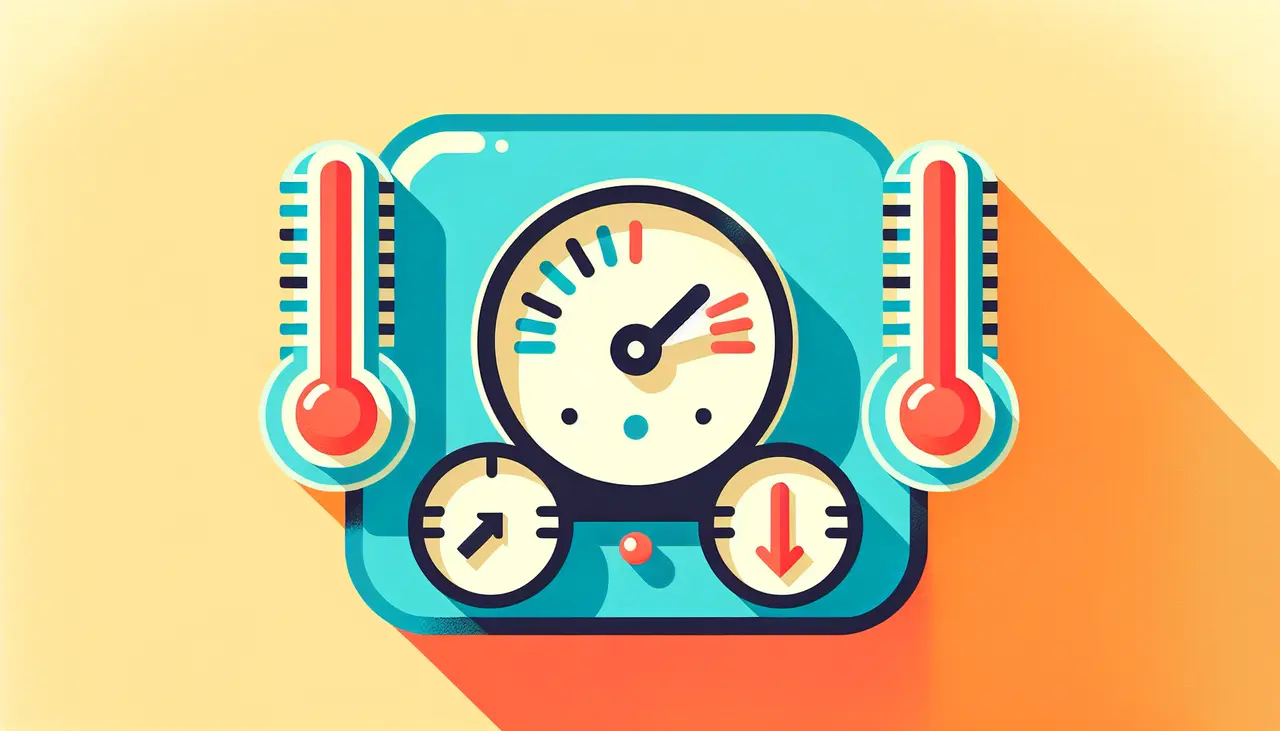Understanding vapor pressure differential can be quite tricky, especially if you’re new to the concept. It’s a topic that has its fair share of pitfalls. But don’t worry, we’re here to guide you through the process and help you avoid common mistakes that might trip you up. Whether you’re a student, a professional, or just an enthusiast, this guide will offer valuable insights in a simple and conversational manner.
1. Neglecting Temperature Effects
Temperature plays a crucial role in vapor pressure differential. Failing to consider how shifts in temperature can affect vapor pressure can lead to significant errors in calculations and outcomes. The relationship between temperature and vapor pressure is exponential, meaning even small changes in temperature can lead to proportionately large changes in vapor pressure charts and graphs can be particularly useful for visualizing this relationship. It’s essential to keep in mind that different substances can react differently to temperature changes, so always consider the specific properties of the material you’re working with.
Moreover, climatic conditions such as seasonal variations can have an impact. For instance, temperatures rise significantly during the summer, leading to sharp increases in vapor pressure. This fluctuation can disrupt processes unless properly managed, making temperature control an integral part of your vapor pressure strategy. Utilizing the right equipment can aid tremendously in managing these factors effectively.
2. Overlooking Humidity Variations
Ignoring humidity levels can skew your understanding of vapor pressure differential. Humidity can alter the vapor pressure effectively, impacting the results of your project or study. When air becomes saturated with moisture, it reduces the evaporation of additional moisture, thus decreasing the vapor pressure gradient. Control of indoor humidity levels is crucial in environments where vapor pressure differentials are significant, such as greenhouses and laboratories.
A hygrometer can be useful in maintaining desired moisture levels by providing real-time humidity measurements. In cases where environmental conditions are tough to regulate, considering alternative materials that are less reactive to humidity changes can be beneficial. Investing in humidity control systems can prevent complications linked to unexpected moisture levels.
3. Misinterpreting Data from Instruments
Using instruments incorrectly or misreading their data is a common pitfall. It’s crucial to be familiar with the tools and understand their limitations to avoid faulty interpretations. Each instrument has its range of precision and accuracy, which means that calibration is key to achieving reliable measurements. Learning how to read and interpret device-specific scales and displays can save you from potential errors.
In addition, ensure that the instruments are regularly maintained and calibrated in accordance with manufacturer guidelines for optimal performance calibration guide. Training sessions and workshops conducted by experienced professionals can be invaluable resources, enhancing both skills and confidence in measuring and interpreting data accurately.
4. Relying Solely on Theoretical Models
While theoretical models are rooted in well-established principles, they might not account for every variable found in real-world environments. Practical applications often reveal additional factors, such as cross-contamination or unexpected temperature surges, that are not represented in basic models. Balancing theory with practical observations and adjustments based on empirical data ensures a more comprehensive and accurate understanding of vapor pressure differentials.
Case studies and field experiments can bridge the gap between theoretical understanding and real-world practice. By analyzing real-world data alongside theoretical models, you can sharpen your analytical skills and foster innovative approaches to problem-solving in vapor pressure differential scenarios.
5. Ignoring External Pressure Factors
External pressures, such as atmospheric pressure, can affect vapor pressure differential, altering the outcomes more than anticipated. For instance, high altitudes can lead to lower atmospheric pressure, thus impacting vapor pressure gradients significantly. Always factor these into your calculations to achieve accurate results.
Regularly monitoring local atmospheric conditions using barometers can provide insights into how pressure variances might influence your experimental or operational setups. Awareness of meteorological changes will aid in planning and adjustments, ensuring that external pressure factors are consistently accounted for in your vapor pressure assessments.
6. Confusing Vapor Pressure with Boiling Point
It’s easy to mix these terms, but they are not interchangeable. Understanding the distinction is vital for correct application of concepts. Vapor pressure refers to the pressure of a vapor in equilibrium with its non-vapor phases at a given temperature, whereas boiling point is the temperature at which vapor pressure equals atmospheric pressure, causing the liquid to turn into gas.
Clarifying these differences can prevent misconceptions, particularly in academic or experimental contexts where precise terminologies are crucial. Educational resources like interactive simulations can provide clearer insights into these distinct yet interconnected concepts, aiding both learning and application.
7. Underestimating the Impact of Surface Area
Surface area affects evaporation rates, which in turn influences vapor pressure differential. Ensure your calculations take these variances into account. Typically, a larger surface area results in increased evaporation rates, thereby elevating vapor pressure.
In industrial applications, equipment that allows for optimized surface area exposure can improve efficiency and vapor management. By analyzing how surface modifications can impact results, you can tailor your approach to enhance performance in operations where vapor pressure differentiation is vital.
8. Missing the Importance of Chemical Composition
The chemical makeup of a substance can drastically change its vapor pressure. Not considering this can lead to unexpected deviations. Different molecules exert different vapor pressures due to variations in molecular weight and intermolecular forces.
Understanding these chemical characteristics is fundamental in predicting behavior under different conditions. Accessing comprehensive chemical databases can facilitate deeper insights, ensuring accurate assessments when dealing with diverse chemical compositions in your projects.




